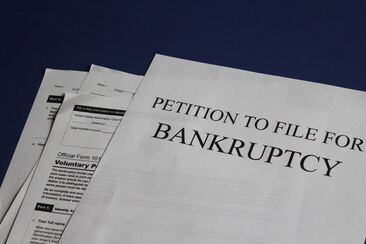
"How did you go bankrupt?" Bill asked.
"Two ways," Mike said. "Gradually and then suddenly."
-Ernest Hemingway
The Sun Also Rises
Many people can relate to Ernest Hemingway's quote about bankruptcy. They do not take on debt thinking that they will eventually file bankruptcy while debt builds up little by little. Then, suddenly, the debt has become more than they can handle, whether it was because of an unexpected setback or because what started as a small amount of debt reaches a point it seems overwhelming.
Fortunately, the bankruptcy code is in place to help those who find themselves in this situation. The purpose of filing for bankruptcy is to discharge your debts and give you a fresh start. It is important to note that some types of debt, such as certain taxes or domestic support obligations. Each chapter of the bankruptcy code has certain requirements, benefits, and drawbacks.
Individual Bankruptcy Under Chapter 7 (Liquidation Bankruptcy): Chapter 7 bankruptcy is designed for debtors in financial difficulty who do not have the ability to pay their existing debts. Under Chapter 7, you may claim certain of your property as exempt. The bankruptcy trustee may take possession of your non-exempt property, if any, and sell it to pay your creditors. There is no repayment plan under Chapter 7.
Individual Bankruptcy Under Chapter 13 (Repayment Bankruptcy): Chapter 13 bankruptcy is designed for individuals with regular income who would like to pay all or part of their debts in installments over a period of time. You are only eligible for Chapter 13 bankruptcy if your debts do not exceed certain dollar amounts set forth in the Bankruptcy Code. A bankruptcy under Chapter 13 allows you to repay all or some of your debts over a period of three to five years through a Chapter 13 plan. Once you have completed the payments under the Chapter 13 plan, your remaining dischargeable debts are discharged.
Farm Bankruptcy Under Chapter 12: Chapter 12 bankruptcy is designed for family farmers to repay their debts over a period of three to five years. A Chapter 12 bankruptcy is similar to a Chapter 13 bankruptcy, but allows for a larger debt limit. Bankruptcy under Chapter 12 is limited to those whose primary source of income is a family-owned farm.
The Supernaw Law Office is a debt relief agency that helps people file for bankruptcy relief under the Bankruptcy Code.
"Two ways," Mike said. "Gradually and then suddenly."
-Ernest Hemingway
The Sun Also Rises
Many people can relate to Ernest Hemingway's quote about bankruptcy. They do not take on debt thinking that they will eventually file bankruptcy while debt builds up little by little. Then, suddenly, the debt has become more than they can handle, whether it was because of an unexpected setback or because what started as a small amount of debt reaches a point it seems overwhelming.
Fortunately, the bankruptcy code is in place to help those who find themselves in this situation. The purpose of filing for bankruptcy is to discharge your debts and give you a fresh start. It is important to note that some types of debt, such as certain taxes or domestic support obligations. Each chapter of the bankruptcy code has certain requirements, benefits, and drawbacks.
Individual Bankruptcy Under Chapter 7 (Liquidation Bankruptcy): Chapter 7 bankruptcy is designed for debtors in financial difficulty who do not have the ability to pay their existing debts. Under Chapter 7, you may claim certain of your property as exempt. The bankruptcy trustee may take possession of your non-exempt property, if any, and sell it to pay your creditors. There is no repayment plan under Chapter 7.
Individual Bankruptcy Under Chapter 13 (Repayment Bankruptcy): Chapter 13 bankruptcy is designed for individuals with regular income who would like to pay all or part of their debts in installments over a period of time. You are only eligible for Chapter 13 bankruptcy if your debts do not exceed certain dollar amounts set forth in the Bankruptcy Code. A bankruptcy under Chapter 13 allows you to repay all or some of your debts over a period of three to five years through a Chapter 13 plan. Once you have completed the payments under the Chapter 13 plan, your remaining dischargeable debts are discharged.
Farm Bankruptcy Under Chapter 12: Chapter 12 bankruptcy is designed for family farmers to repay their debts over a period of three to five years. A Chapter 12 bankruptcy is similar to a Chapter 13 bankruptcy, but allows for a larger debt limit. Bankruptcy under Chapter 12 is limited to those whose primary source of income is a family-owned farm.
The Supernaw Law Office is a debt relief agency that helps people file for bankruptcy relief under the Bankruptcy Code.